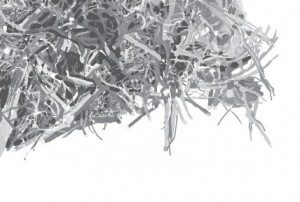Kindling
- Share
- Tweet
- Pin
- Share
A lot of books, how-to guides, outdoor journals get written about…firewood. How to build a fire, how to cook on a fire, what wood makes a good fire, what axe to use, how hard to swing the axe, what the pile should look like.
Seldom is kindling mentioned. I once lived in the household of my grandmother who cooked her morning coffee over a wood fire because she didn’t believe good coffee was possible via propane. This trait has followed her progeny, some who carry yet her fire-identity genes. They have adapted this prejudice to think that a good steak, good salmon, good zucchini with drizzled olive oil is not possible over propane.
I have attempted to prove to them that all fires are gas fires because charcoal briquettes break down under gaseous erosion into methane, butane and pentane, and they are in final analysis grilling over gas despite themselves, to no avail.
I have kin who are science dummies. They don’t care as long as they are equipped with a bag of hardwood briquettes. I mention the transport cost involved, that the tree could have been used for building houses, making hardwood flooring, furniture and pallets, not destructively distilled to charcoal.
The Boy Scout manual from 1950 had a chapter devoted to building a proper fire and how a proper fire started with proper kindling. This my grandmother taught me.
The wise fire builder is ever watchful for kindling. It is distinctive stuff that makes for good kindling, the first choice which is birch bark. The second is a subscription to the local newspaper, like a daily if you’re a real wood burner since a weekly isn’t enough kindling during a Wisconsin winter to keep up the supply.
Newsprint is connoisseur stuff when it comes to kindling. The very best kind is when you use newsprint as a floor covering after mopping because that’s how you get to read the entire paper, including the legals, personals and puppy ads. The wetting of the paper, then drying enhances the fluff of the paper to the end it is more kindle-able.
The moment of kindling a fire is sorta like the marriage vow – tending is required. As it is when you have created this pile of expertly wadded newsprint, the top dressed with small wood split smaller. Good kindling is a math lesson of taking one wood slab and halving it with a tool called a kindling axe (never mind it’s a hatchet). Halving the half, halving that, halving until at the last stage you’re down to a modest toothpick. This assortment laid over the newsprint, smaller bits at the bottom.
When I was a child-type farmkid, there was a toy called tinker toys, of which you sort of built stuff. I already knew the toy as kindling – building fire was the object lesson of tinker toys farmkid version.
When I go camping with friends and family, it is interesting to watch how people approach the kindling question. Whether to take time to properly dress the kindling or just toss diesel fuel over the heap of wood. I credit kindling making the same as making bread or making love, it’s the preparation that counts.
There is a moment before fire. No matter whether you are in the cellar firing up the furnace or in the woods at a campfire. A moment at kindling that has the stillness of the holy. That moment of invocation to rapid oxidation, the ritual that made human beings the god-chosen animals we are. The ability at our will to kindle rapid oxidation. Armed with this novel chemistry, never again the night so dark, the day so cold, the meat raw, and soup always possible.
To kindle a fire is to be amazed we can actually cause … fire. To wonder what would have become of us, the plain naked animals we are, without the ability to cause fire. To my thinking, this is where the phrase “in god’s image” comes into play.
My grandmother outlived our grandfather by a decade and a half. Blessed be the fates, she never had to go to the nursing home, instead living out her life in the west end of the farmhouse. She had her chickens to tend, a garden to weed and in the morning, she had her coffee fire to kindle.
Her father had emigrated from Germany to escape the draft. She remembered German songs he taught, and sang them in a hushed low voice as she tended her kindling. I came to think of these words as a spell, incomprehensible words by which she made fire. My grandmother, it seems, could call up magic.

